Supporting guidance for Management, Restoration or Creation of Hedgerows
Date published: 9 January, 2017
For recent changes to this guidance, please see the bottom of the page.
The Management or Restoration of Hedgerows and the Creation of Hedgerows options support the creation of good hedge structure with an abundance of flowers and berries for wildlife.
The Creation of hedgerows option is much more targeted and therefore available on less areas than the Management or restoration of existing hedgerows.
Check if you are eligible for hedge creation using the Targeting tool.
Hedges provide valuable food and cover for wildlife, including species of conservation concern such as yellowhammer, tree sparrow, linnet and grey partridge.
The seed, fruit, pollen and nectar they produce, as well the abundance of insects, spiders and other small bugs they support, feed a variety of birds, insects and small mammals.
Hedges can also prevent soil erosion, store carbon, and provide pathways for species movement across the landscape.
How to increase the success of the option
For best results, good hedgerows:
- are denser, wider and taller to provide most food and shelter
- link up with associated features such as wildflower and grass margins, hedgerow trees, dead wood, ditches, dykes and, earth banks, and support a variety of trees and shrubs
- provide an abundance and diversity of food throughout the seasons, particularly pollen and nectar in late autumn, and berries in winter
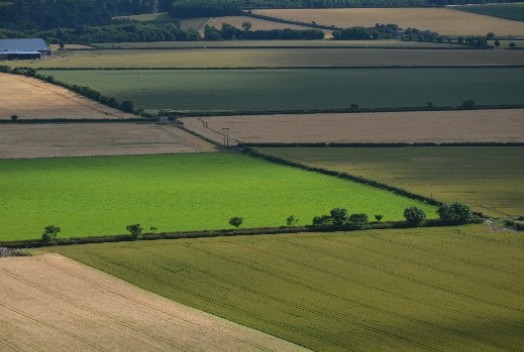
Hedgerows in an intensively farmed landscape – Credit: Tony Seymour – © TFE 2014
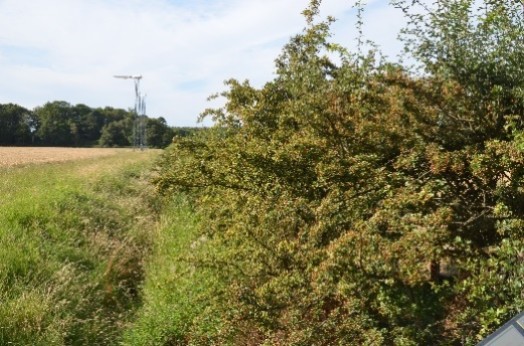
Abundant late autumn fruit production on the side branches of an un-trimmed hedge – Credit: Tony Seymour – © TFE 2014
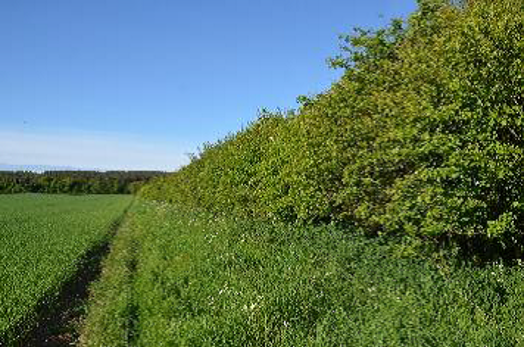
Well-formed large hedge with grass margin – Credit: Tony Seymour – © TFE 2014
What needs to be done?
Trim your hedges every two or three years instead of annually to increase the flower and fruit crop, particularly for farmland birds and bees, and especially through winter.
Trimming removes flower and fruit-bearing stems or simply shakes flowers and fruit off the hedgerow plants. The Hedgelink video clip – A Cut Above the Rest (part 4 – Berry Production) – shows how two or three-year-old hawthorn growth flowers abundantly, in contrast to one-year growth.
Over time, aim to bring all hedges on the holding into a long-term, sustainable cycle of restoration and management to produce a diversity of hedgerow forms and stages across the farm, appropriate to the local landscape.
The Hedgerow Management Cycle Guide will help you to assess the condition of your hedges and identify management objectives for each hedge, such as its height, width, and long-term management cycle.
Manage your hedges by:
- trimming no more than once every two to three years
- trimming in winter rather than autumn
- restricting the proportion of hedges trimmed in any one year to a maximum of one third of the hedgerows on the farm
- enhancing the height and width of the hedgerows
- protecting them from livestock
Restore your hedges through any combination of:
- hedge laying
- coppicing
- planting
- protection from browsing animals
Create new hedges to improve habitat connectivity through:
- planting
- protecting plants from browsing animals
Hedge trimming
Hedge trimming helps to manage and maintain the form of the hedge. Done correctly it also encourages the network of branches and twigs to become denser with each year’s new growth.
The Hedgelink video clip – A Cut-Above the Rest (part 5 – Hedge Trimming) – shows how, by moving the trimming-line out a little each time, you can improve the structure and health of the hedge. When trimming, cut the annual growth back to about eight centimetres from the previous cut. The hedge will gradually expand out, both sideways and upwards.
After 10 to 15 years of hedge expansion, the extended growth can be taken hard back to keep the hedge within manageable heights and widths, and to restart the trimming cycle.
You should match the type and weight of cutter or trimmer to the size and thickness of the branches to be cut. Light to medium flails should be suitable for one to two years growth. Heavy flails or, ideally, a 'shapesaw' should be used on heavier growth.
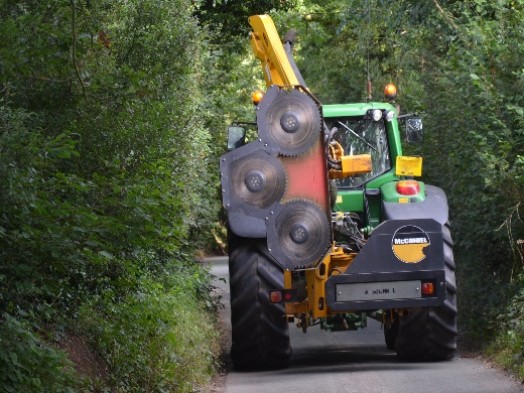
Shapesaw used for taking back heavy growth – Credit: Tony Seymour – © TFE 2014
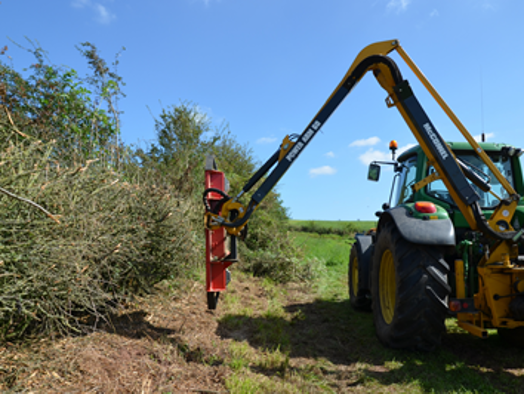
Shapesaw used for taking back heavy growth – Credit: Tony Seymour – © TFE 2014
Hedge rejuvenation and restoration
Enhancing the wildlife and landscape value of existing hedges should be given priority over the creation of new hedges.
Most of our native, broadleaved trees and shrubs respond to being cut by producing new shoots.
Cutting the stems through coppicing, pollarding (a method of pruning) or laying at up to 20-year intervals can maintain the plants in a 'juvenile' state for hundreds of years, stimulating them to produce young, vigorous growth.
This restructuring can prevent or reverse the deterioration of a hedgerow through the stages of ageing, plant loss, and gap-formation.
Further guidance is available under the separate capital items:
Planting or replanting hedges
If you are establishing new hedges, place them where they will help to link up with other hedgerows and strengthen habitat corridors.
Protect young and developing hedge plants from browsing by animals. Healthy regrowth from coppice and laid hedges is most at risk from browsing by deer and livestock and heavy grazing by rabbits.
Coppiced or replanted hedges may need protection from livestock on both sides.
Fencing requirements for laid hedges will depend on the style and age of the hedge. Make sure any laid hedges are livestock-proof on at least on one side within a year.
You may need to put up or maintain scare fences to keep cattle off these hedges. Effective protection of young and low hedges from deer by fencing is very difficult if the rate of growth from young plants or coppice is weak.
Assess this risk and make sure that new plants are established under the best possible conditions to gain good, strong growth from the start.
Site livestock fencing at least one metre away from the centre line of the hedge and further away where possible to allow space for the hedge’s expansion and to leave room for trimming, coppicing or laying the hedge in the future.
Control competing vegetation in the first two years of establishment.
Further guidance is available under the separate capital items:
Hedgerow trees
Hedgerow trees are important for their wildlife and landscape value, and may represent most of the native tree cover within the landscape. Old trees support a wide range of small creatures, fungi and lichens in dead wood, holes and crevices.
Where safe, keep some standing dead timber. Hedgelink provides more information on the value of hedgerow trees. They are particularly important for barn owls, tree sparrows, species of bat, and butterflies such as the purple hair-streak.
Hedgerow trees may be subject to Tree Preservation Orders, or may support bat roosts, which are protected by law.
Further information
- Hedgelink – information on the UK's native hedges, hedgerow conservation and hedge management
- The National Hedgelaying Society
- RSPB – hedgerow webpage
Recent changes
| Section | Change |
|---|---|
| Introduction | Addition of guidance relating to using the targeting tool |
